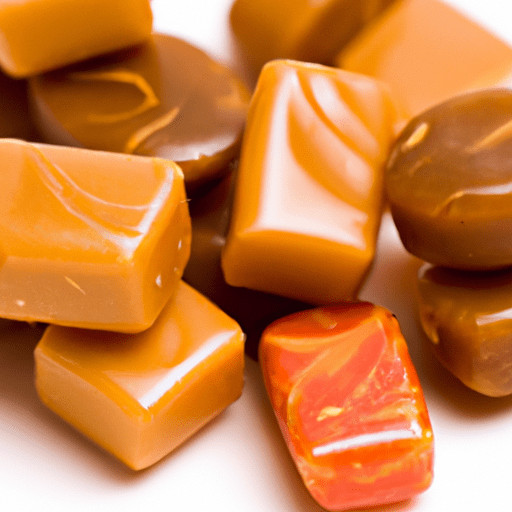The Delightful World of Peanut Butter Candies
If you’re a fan of the rich, creamy goodness that is peanut butter, then you’re in for a treat. Peanut butter candies are a delightful creation that takes this beloved spread to a whole new level. Whether you enjoy them on their own or use them as a secret ingredient in your recipes, these delectable treats are sure to please your taste buds.
A Taste Sensation
Peanut butter candies offer a satisfying combination of sweetness and nuttiness that provides a burst of flavor with every bite. The creamy texture of the peanut butter center is often perfectly complemented by a chocolate or candy coating, creating a harmonious balance of tastes and textures. The resulting candy is a delightful mix of savory and sweet that keeps you coming back for more.
Versatile and Delicious
Not only are these candies a joy to eat on their own, but they also lend themselves brilliantly to a variety of culinary creations. From incorporating them into baked goods and desserts to using them as a garnish for ice cream or a filling for homemade chocolates, the possibilities are endless. Peanut butter candies bring a delectable twist to traditional recipes and can elevate the flavor experience in unexpected ways.
Nutritional Benefits
Peanut butter candies, despite their indulgent nature, offer some surprising nutritional benefits. Peanut butter itself is a good source of protein and healthy fats, making it an excellent choice for those looking to add some nutritional value to their sweet treats. Additionally, peanuts are rich in vitamins, minerals, and antioxidants, which can contribute to your overall well-being.
However, it’s important to note that peanut butter candies do contain added sugars and fats, which should be consumed in moderation as part of a balanced diet.
A Sweet History
The history of peanut butter candies dates back to the early 20th century when George Washington Carver, a renowned agricultural scientist, popularized the use of peanuts in various forms. However, it was H.B. Reese who truly revolutionized the peanut butter candy industry with his creation of Reese’s Peanut Butter Cups in the 1920s. Since then, peanut butter candies have become a beloved staple in the candy world, captivating the hearts of millions.
Fun Facts about Peanut Butter Candies
- Peanut butter candies are a popular Halloween treat, ranking right up there with classic favorites like chocolate bars and candy corn.
- There are numerous variations of peanut butter candies, including peanut butter-filled pretzels, peanut butter jars with chocolate shells, and even peanut butter-filled breakfast cereals.
- The annual consumption of peanut butter cups in the United States alone is estimated to be over one billion!
Conclusion
Peanut butter candies offer a delightful combination of flavors and textures that make them an irresistible treat. Their versatility in cooking and baking opens up a world of delicious possibilities, ensuring that they will always hold a special place in the hearts of food lovers everywhere. So go ahead, indulge in this delightful creation, and experience the joy of peanut butter candies for yourself!
Origin:
- Peanut butter candies have their origins in ancient times when peanuts were ground into a paste-like consistency and mixed with honey or other sweeteners.
- The Aztecs and Incas are believed to have made a primitive form of peanut butter by grinding roasted peanuts into a paste.
- The first modern version of peanut butter was developed by an American named Dr. John Harvey Kellogg in the late 19th century.
Common Uses:
- Peanut butter candies are popular as confectionery treats. They are often used in various forms, such as:
- Peanut butter cups: A popular candy made by combining peanut butter with chocolate.
- Peanut butter-filled chocolates: Chocolates that have a creamy peanut butter filling.
- Peanut brittle: A hard, sweet candy that combines peanuts and caramelized sugar.
Nutritional Benefits:
- Peanut butter candies can provide some nutritional benefits, although they are typically high in sugar and calories.
- Peanuts are an excellent source of protein, dietary fiber, vitamins (such as vitamin E), and minerals (such as magnesium and potassium).
- Peanut butter also contains healthy monounsaturated fats, which can be beneficial for heart health and may help lower cholesterol levels.
Unique Properties and Historical Significance:
- Peanut butter candies are well-known for their unique combination of sweet and nutty flavors.
- The Reese’s Peanut Butter Cup, introduced in 1928, is one of the most famous peanut butter candies and has remained popular for generations.
- In the United States, peanut butter candies are often associated with Halloween, as they are a common treat given out during the holiday.
- Peanut butter candies have become a significant part of American pop culture, with various brands and flavors available in stores worldwide.




Use the share button below if you liked it.
It makes me smile, when I see it.